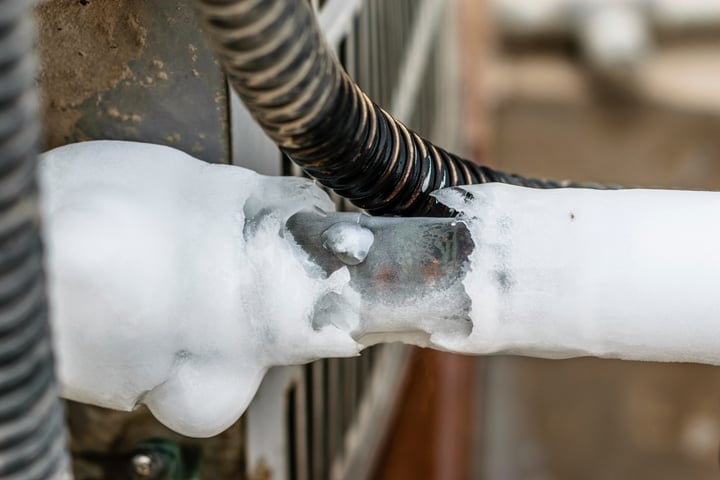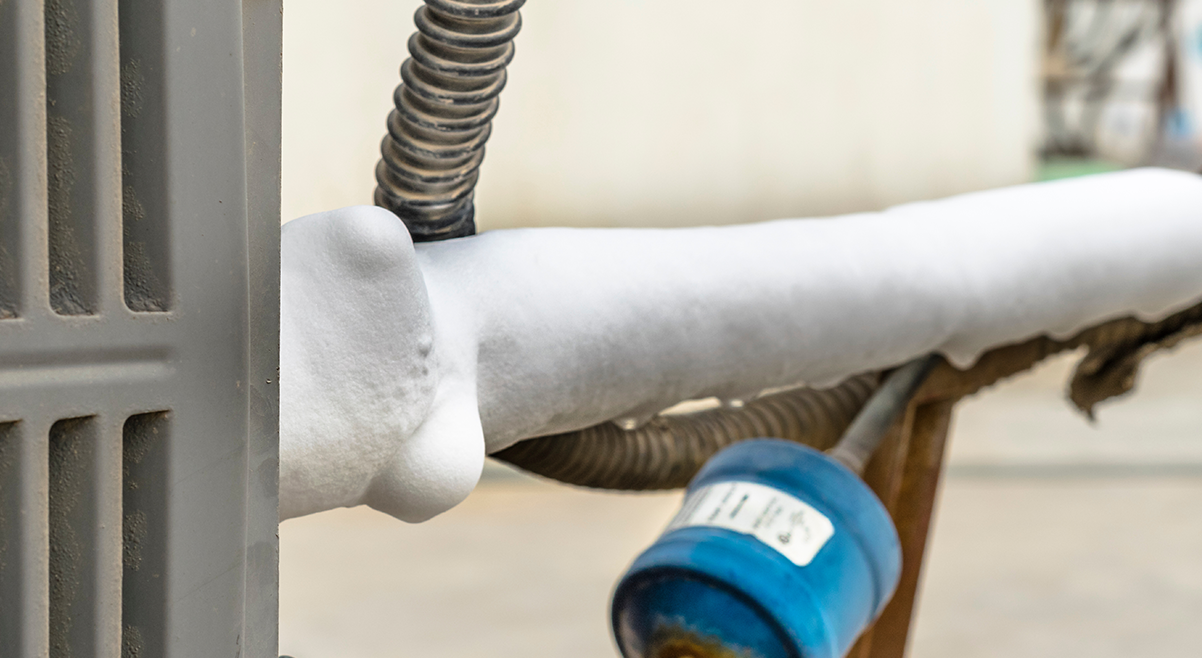What to Do When Your AC Pipe Freezes: Crucial Advice
What to Do When Your AC Pipe Freezes: Crucial Advice
Blog Article
Every person has got their own unique way of thinking about What Do I Do If My AC Pipe Is Frozen.

Intro
Finding that your AC pipeline is frozen can be concerning, especially during warm summer season when you depend on your a/c unit the most. Recognizing what to do in such a situation is important to stop further damage to your cooling system and ensure your convenience inside your home.
Recognizing the Causes
Several aspects can contribute to the freezing of an a/c pipeline. Recognizing these causes can help you resolve the concern effectively.
Lack of Airflow
One common root cause of an icy air conditioner pipeline is inadequate air movement. When the air movement over the evaporator coil is limited, it can trigger the coil to go down below freezing temperature, resulting in ice formation on the pipe.
Reduced Refrigerant Levels
Not enough cooling agent levels in your AC system can additionally lead to a frozen pipeline. Reduced refrigerant degrees can trigger the pressure in the system to go down, causing the freezing of wetness on the evaporator coil.
Cold Weather Conditions
In cooler climates, freezing temperature levels outside can add to the freezing of a/c pipes. If your air conditioner unit is not effectively protected or if there are leaks in the ductwork, cool air can infiltrate the system, creating the pipe to freeze.
Dirty Air Filters
Unclean or blocked air filters can limit air movement in your AC system, causing different problems, consisting of a frozen pipeline. It's important to change or cleanse your air filters regularly to ensure proper airflow and avoid ice build-up.
Indications of a Frozen AC Pipe
Identifying the signs of an icy AC pipeline is essential for punctual action.
Decreased Airflow
If you see a significant reduction in air movement from your vents, it could indicate an icy pipeline.
Ice Buildup on the Pipe
Noticeable ice buildup on the refrigerant line or the evaporator coil is a clear indicator of a frozen a/c pipeline.
Odd Sounds from the Unit
Unusual noises, such as hissing or bubbling, originating from your air conditioning device can indicate that there's ice present on the pipeline.
Immediate Actions to Take
When confronted with a frozen air conditioner pipe, it's important to act quickly to avoid more damage to your air conditioning system.
Turning off the a/c
The first step is to shut off your ac system to avoid the system from running and aggravating the concern.
Looking for Blockages
Inspect the area around the indoor system for any type of blockages that might be obstructing air movement, such as furnishings or drapes.
Thawing the Pipe
You can utilize gentle techniques like putting towels soaked in warm water around the frozen pipeline to assist thaw it gradually.
Safety nets
Taking safety nets can help avoid future events of a frozen air conditioning pipeline.
When DIY Methods Fail
If your efforts to thaw the pipe or address various other problems are not successful, it's time to employ a professional.
Relevance of Hiring a Professional HVAC Technician
A certified HVAC professional has the competence and devices required to identify and fix issues with your a/c system securely and efficiently.
Routine Maintenance Checks
Set up normal maintenance talk to a specialist HVAC professional to make sure that your air conditioner system is running successfully.
Changing Air Filters
Routinely replace or clean your air filters to prevent airflow restrictions and maintain optimum efficiency.
Shielding Exposed Pipes
If your air conditioning pipes are exposed to cool temperature levels, take into consideration protecting them to avoid freezing throughout cold weather.
Seeking Professional Help
If DIY methods fall short to settle the concern or if you're not sure regarding how to continue, it's finest to look for help from a qualified HVAC professional.
Final thought
Dealing with an icy AC pipe can be an irritating experience, however recognizing exactly how to react can help lessen damage and bring back convenience to your home. By understanding the reasons, acknowledging the indicators, and taking prompt action, you can successfully address the issue and stop future incidents.
Frozen AC Line: Why It Happens & What To Do About It
A frozen AC line can be a rather peculiar sight in a place like Phoenix, Arizona where nothing ever freezes. In this post, we’ll discuss what makes an air conditioner line frozen – and what you can do about it.
Dirty Air Filters
Did you know that you should be cleaning or replacing your air filters on a monthly basis? Failing to do this can result in airflow issues that, in turn, cause your evaporator coils and lines to freeze over. You’ll notice a buildup of ice on both components, although the buildup on your pipes will, of course, be more evident unless you open your air condition up to reveal the coils.
What To Do About It
Give your air filter a good cleaning if it’s reusable. If not, replace the filter outright. Next, switch your air conditioner’s fan setting on and leave it there for 2-3 hours. This will draw warm air in, helping to thaw your evaporator coil. You can also check out this article for some tips on cleaning the coils themselves if you’d like to speed the process up. Before you switch the unit back to its normal state, make sure the supply vents are completely unobstructed and free of dust or other debris.
If you keep having this issue even after replacing your filters regularly, contact a local HVAC repair company and have them inspect your evaporator coil, ductwork, and any other components that may be at fault. If you live in the Phoenix, Arizona area, give American Home Water and Air a call.
Low Refrigerant Levels/Leakage
What To Do About It
Contrary to what air conditioner “recharge” companies often tell their clients about refrigerant, it should never need to be simply refilled. You see, refrigerant runs in what experts refer to as a “closed loop.” Refrigerant really shouldn’t be leaving that loop. If it is, you’ve got a leak.
Paying someone to come and pump more refrigerant into your system (aka “recharge” it) isn’t the solution. Doing that will simply kick the can down the road. Besides, refrigerant leaks can be harmful to the environment and people in your home.
Rather, you need to take care of the leak with the help of a technician. Check out this article for some more information about dealing with air conditioners that are leaking refrigerant. Before you contact a technician, switch your thermostat to the off position. Then, switch the fan setting on and let it run for 2-3 hours so the unit can thaw.
Improper Temperature Setting
Improper temperature settings can also cause a drop in your air conditioner’s pressure. What many people don’t realize is that air conditioners are actually designed to run when temperatures have fallen above roughly 60 degrees Fahrenheit. If you run the unit when it’s cold outside, you’ll run into many issues, including frozen components.

As a serious person who reads about Air Conditioner Frozen? How To Fix your Frozen AC Line, I thought sharing that portion was important. I beg you set aside a second to share this page if you enjoyed reading it. Bless you for your time. Don't hesitate to pay a visit to our blog back soon.
Click For More Info Report this page